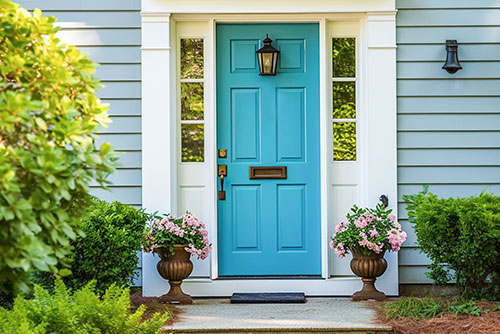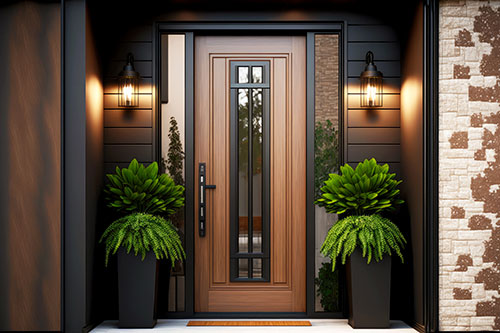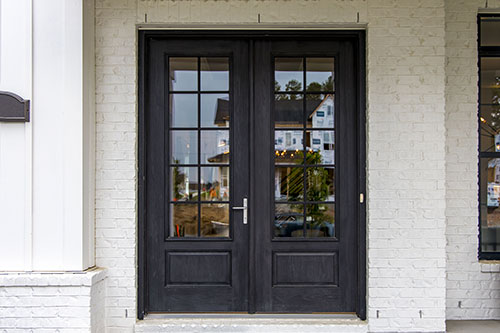Exterior Doors
Exterior doors serve as the entry points to buildings and homes, providing security, insulation, and contributing to the overall aesthetics of the structure.
They are designed to withstand external elements such as weather, temperature fluctuations, and potential intruders.
Here are key aspects to know about exterior doors:
Materials:
- Wood: Traditional and timeless, wooden exterior doors are often chosen for their natural beauty. Common wood species include oak, mahogany, and fir. Proper sealing and maintenance are essential to protect wood doors from the elements.
- Fiberglass: Fiberglass exterior doors are durable, energy-efficient, and resistant to warping, rotting, and insects. They can mimic the look of wood and are relatively low-maintenance.
- Steel: Steel doors are known for their strength and security. They are resistant to harsh weather conditions and provide excellent insulation. However, they may require additional maintenance to prevent rust.
Styles and Designs:
- Single vs. Double Doors: Exterior doors can be single or double depending on the size and design of the entryway.
- Entry Door Systems: Some exterior doors are part of larger entry door systems, which may include sidelights (narrow windows on one or both sides), transoms (windows above the door), and decorative glass panels.
Security Features:
Exterior doors often come with various security features, including:
- Deadbolt Locks: Provide additional security beyond the main lock.
- Reinforced Frames: Strengthen the door frame to resist forced entry.
- Peepholes: Allow occupants to see who is outside without opening the door.
Weather Resistance:
Exterior doors are exposed to the elements, so they need to be weather-resistant. This includes features like weatherstripping to prevent drafts, and proper sealing to protect against rain and moisture.
Energy Efficiency:
Energy-efficient exterior doors help maintain a comfortable indoor temperature and reduce heating and cooling costs. Look for doors with insulated cores and energy-efficient glass options.
Glass and Decorative Elements:
Some exterior doors feature glass panels to allow natural light into the entryway. Decorative glass options include stained glass, beveled glass, and textured glass.
Decorative elements such as panels, raised moldings, and carved details can enhance the visual appeal of the door.
Paint and Finish:
Exterior doors require durable finishes to protect against UV rays, moisture, and temperature changes. Staining or painting the door enhances its appearance and longevity.
Maintenance:
Regular maintenance is essential for preserving the condition and appearance of exterior doors. This may include cleaning, repainting, or resealing, depending on the material.
Building Codes and Regulations:
Compliance with local building codes and regulations is crucial when selecting and installing exterior doors. This ensures that the door meets safety and performance standards.
Installation:
Proper installation is critical for the functionality and longevity of exterior doors. It involves correctly fitting the door in the frame, ensuring secure anchoring, and sealing any gaps.
Exterior doors play a vital role in a building’s curb appeal, security, and energy efficiency.
When choosing an exterior door, consider the climate, architectural style, and the desired level of security and insulation for the specific application.
Regular maintenance and occasional upgrades contribute to the door’s durability and overall performance.
Call ProMillwork Now
(630) 264-2100




